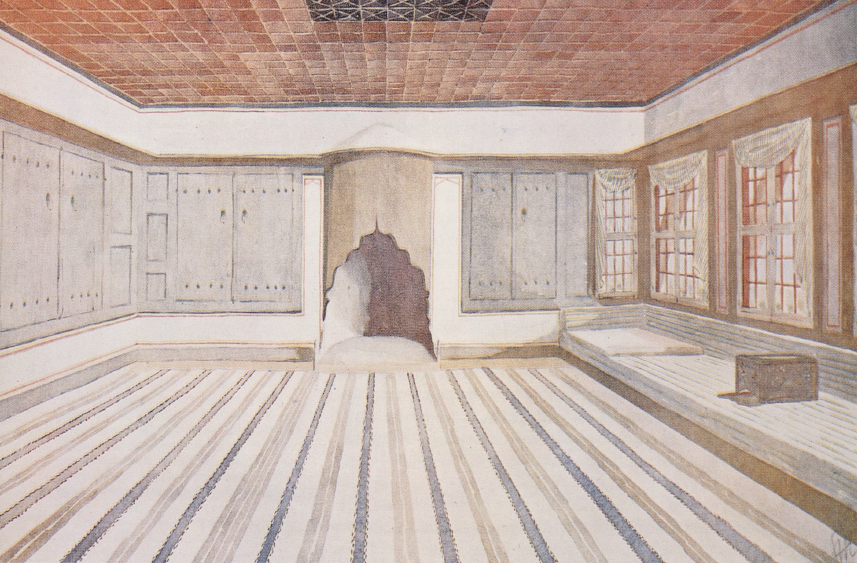Outside the heart of the city, most houses in 16th-century Istanbul were a semi-rural type: One to three rooms, on average, with a small courtyard and possibly a veranda-like indoor/outdoor room called a sofa. The courtyard and sofa were as much a part of the house as the enclosed rooms were. They were where all the dirty work was done, and where a woman would spend much of her day.
Indoors, each room was a self-contained living unit. It had everything the family needed to socialize, dress, bathe, eat, and sleep. A fireplace or brazier offered warmth, and built-in cabinets and display niches stored all the family’s belongings.

A winter room in a 19th-century house in Gebze. Although the room is unquestionably post-period, its simplicity helps to suggest what a modest home of the 16th century might feel like.
There are no residences surviving from the 16th century or earlier except for Topkapi Palace and the Güpgüpoğlu Mansion, both heavily rebuilt and remodeled over the centuries. The houses below are early enough and intact enough to be useful in reconstructing 16th-century houses:
- The 1555 House, Bursa, possibly end of the 16th century
- The Ayşe Kadın House, Manisa, 17th century
- The Malike House, Tire, 17th century
- The Namazgah House, Bursa, end of the 17th century; similar to the 1555 House
- The Halil Ağa House, Mudanya, 1634 [link]
- The Germiyans House, Kütahya
- “The house which is behind the court-house,” Bursa
- The Veli Baba House, Yenişehir
- The Muradiye House, Bursa
- The Sultan Murad House, Muradiye, Bursa
Images from miniatures can also help, showing us stylized renditions of the ideal house.



